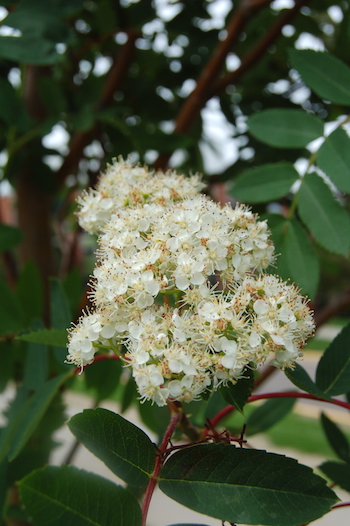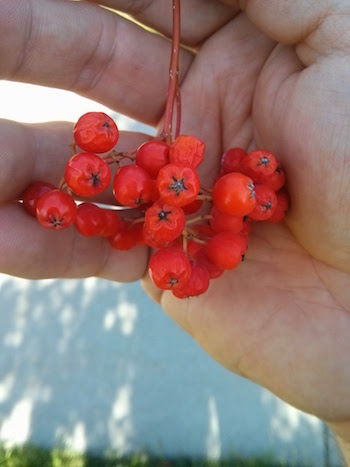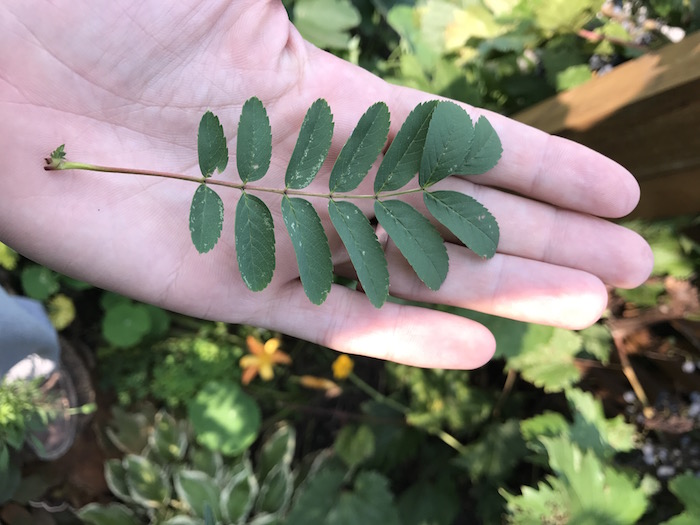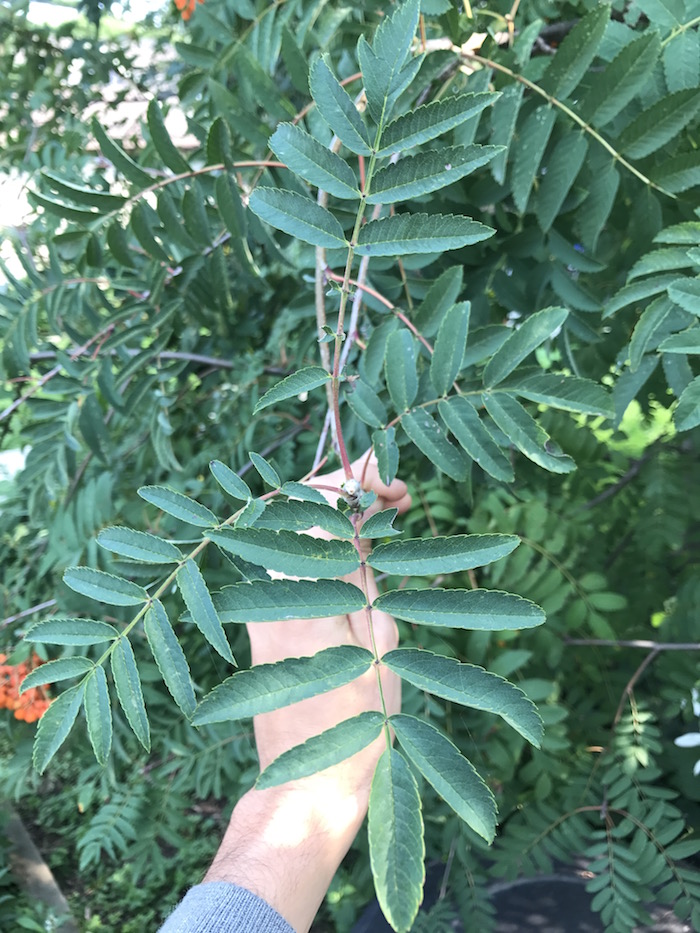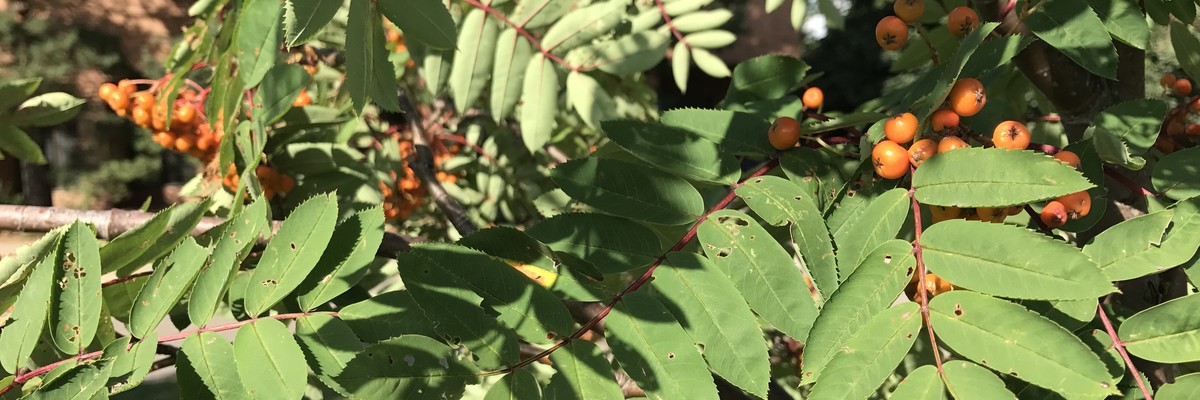
Description:
Mountain Ash is a small tree or shrub notable for showy spring flowers and bright fall fruits. Leaves are alternate, compound, and bluish-green, with 11-15 serrated leaflets. The flowers are white and clustered with five petals and emerge in late spring in Minnesota. The flowers eventually develop into bright orange or red fruits that remain on the tree after leaf drop in the fall.
Mountain Ash are commonly used as flowering landscape trees. The berries are too bitter and acidic to be eaten fresh, but have been used for jam and are an important food source for animals throughout the winter and early spring. Though it resembles other ash trees, Mountain Ash is in the rose family, and is not related to the true ashes in the olive family. It is, however, closely related to the similar looking Common Mountain Ash, Sorbus americana.
Little research considering Mountain Ash is currently underway at the University of Minnesota, but in 2002, the Horticultural Research Center released the 'Patio Pride' cultivar of Sorbus americana. This particular cluster of Mountain Ash trees was planted in 2012.
Issues:
The most severe pest to Mountain Ash is bacterial fire blight, which can cause scorched leaves. The tree is also suspectible to crown rot, cankers, and scab.
Other Resources:
